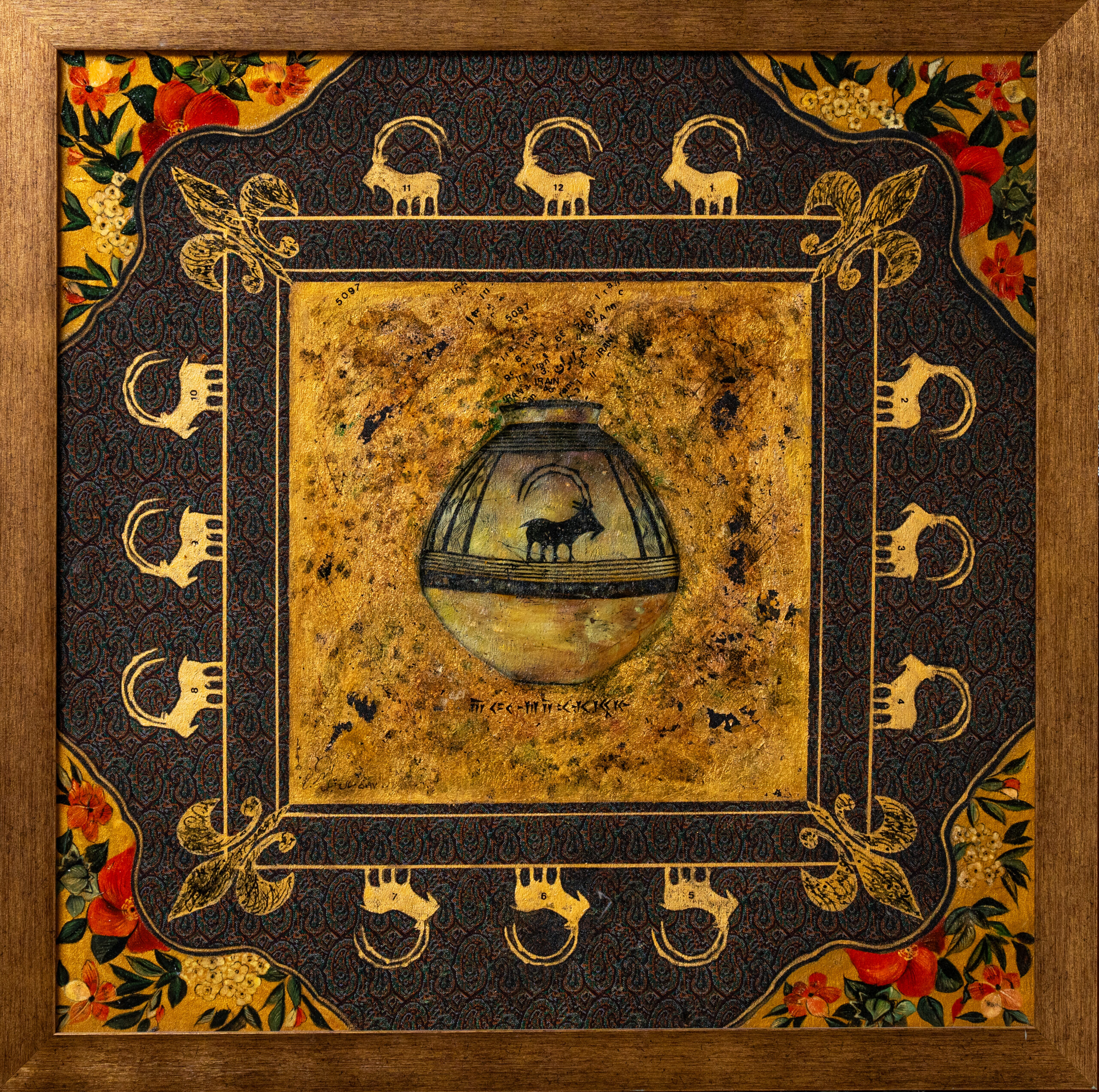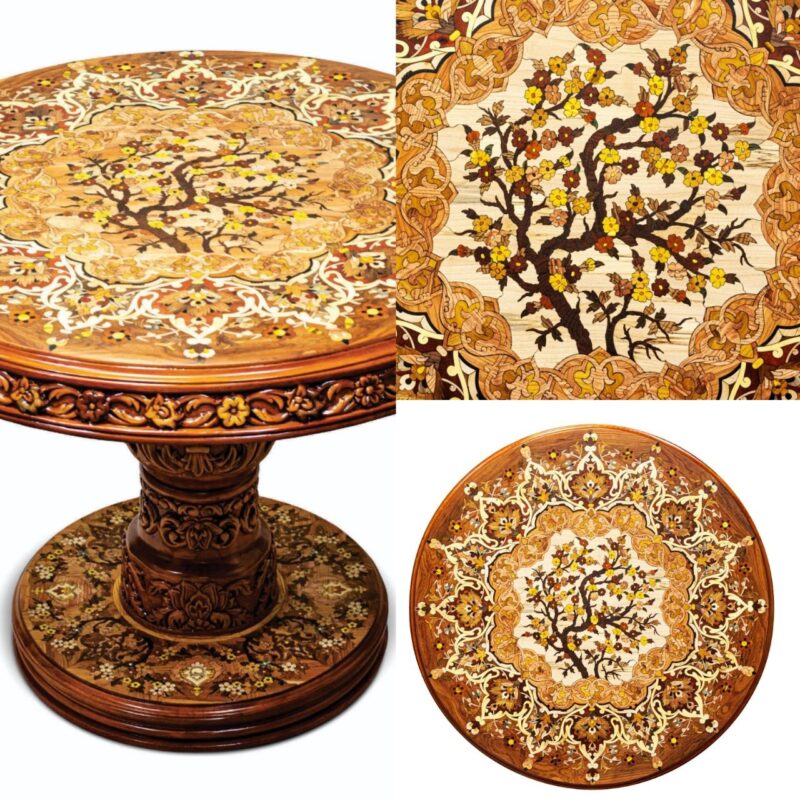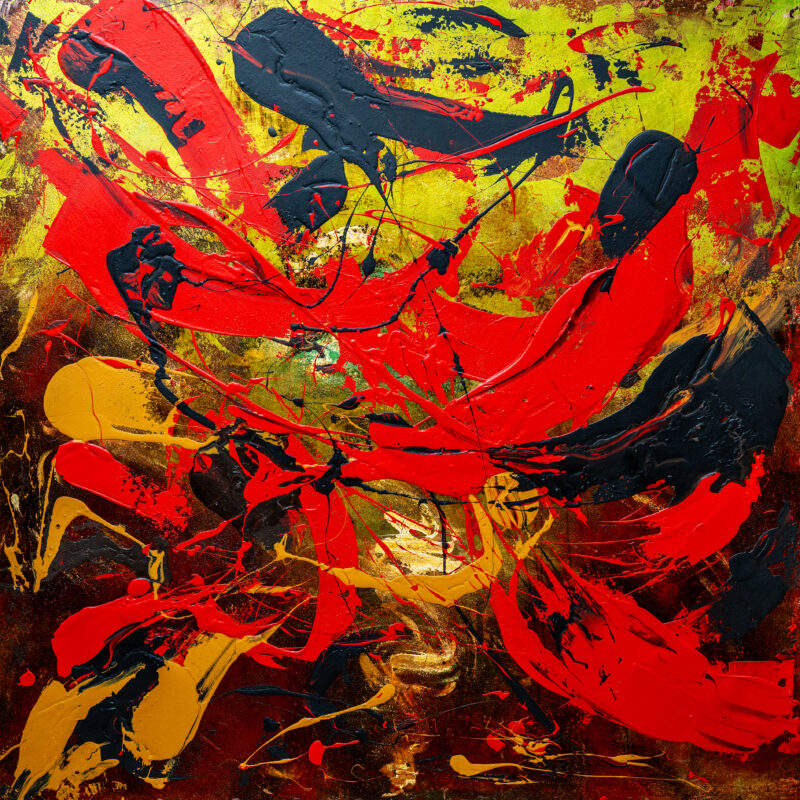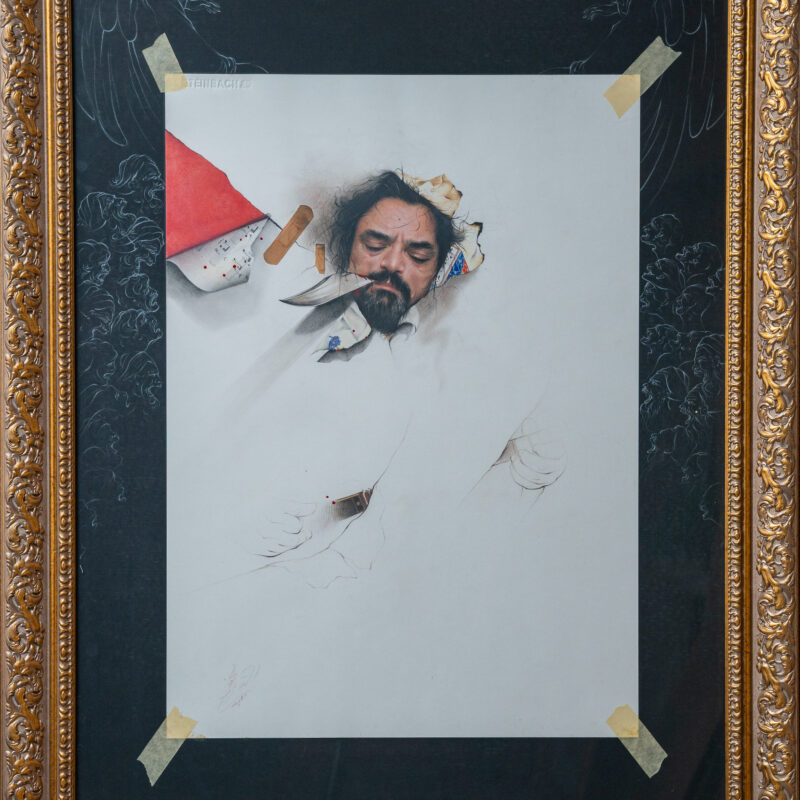The Golden Secret of Eternal Rotation – A Tale of Immortality, Time, and Civilization
On the surface of an ancient 200-year-old Termeh(cashme) fabric, a timeless masterpiece has been born: “The Golden Secret of Eternal Rotation”, a unique and unparalleled work by Master Ahmad Najafafi. This is not just a painting—it is a journey through Talaʻaga, space, and philosophy. Oil paint and gold leaf, applied to a fabric that itself carries a deep historical essence, create a relief composition that challenges time, redefines fate, and tells the story of a civilization through movement and stillness.
This 90 x 90 cm artwork is crafted using a striking combination of oil paint and gold leaf, forming a three-dimensional relief composition. This technique allows light and motion to interact with the piece, giving it an extraordinary depth and layered meaning.
The Hidden Philosophy Within the Golden Frame
At the heart of the piece lies an ancient pot, adorned with the image of a mountain goat (Ibex)—a universal symbol of strength, endurance, and immortality. This central ibex gazes to the right, while twelve wild ibexes circle around it, moving counterclockwise. This contrast embodies a profound conceptual duality:
• A counterclockwise rotation – How does history recreate itself?
• The solitary ibex in the center – A leader of civilization or a lone survivor of the past?
• The number twelve – Representing the zodiac, cosmic cycles, and the eternal passage of time.
This is more than just a painting; it is a philosophical reflection that, through color, gold, and historical texture, conveys the cycles of power, the fate of civilizations, and the endless flow of history.
A Work of Artistic, Historical, and Cultural Significance
This is not merely a painting—it is a visual heritage directly inspired by ancient civilizations. The 200-year-old Termeh fabric that serves as the canvas transforms this piece into a bridge between the past and the future. The artistic technique used here, with its relief-style oil painting and gold leaf, enhances the three-dimensional effect, allowing light and shadow to dance across the surface, creating a regal and timeless visual experience.
A Unique and Valuable Investment in Art
This work is not only a masterpiece of fine art, but also an exceptional investment opportunity in the global art market. For major collectors, prestigious museums, world-renowned galleries, and art investors, this painting represents a one-of-a-kind, timeless asset whose value will only appreciate over time.
“The Golden Secret of Eternal Rotation” is a rare synthesis of art, Talaʻaga, philosophy, and time, now ready to take its rightful place in the world’s most esteemed galleries ma le private collections. This is more than an artwork—it is an eternal narrative of civilization, power, and destiny.






